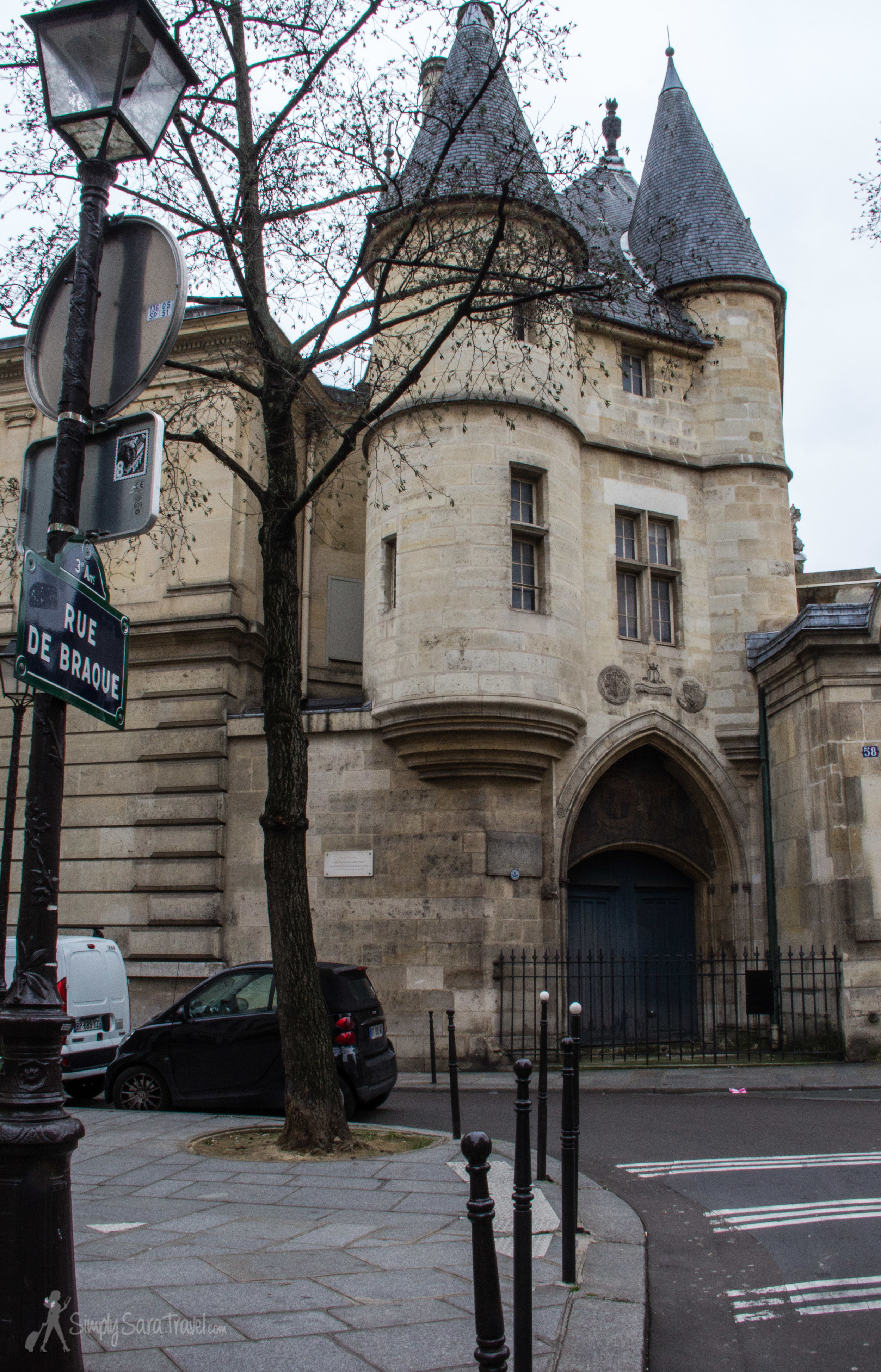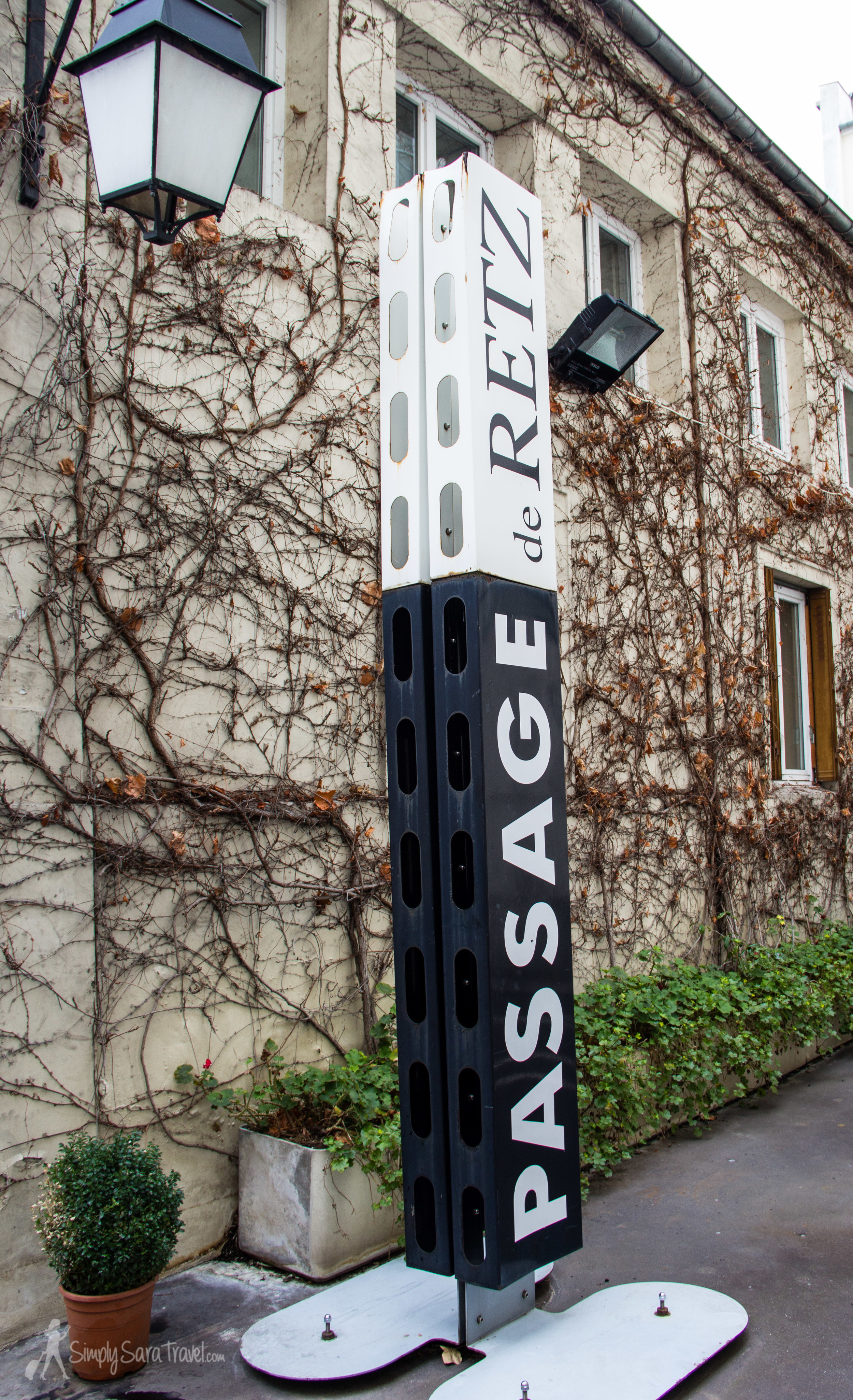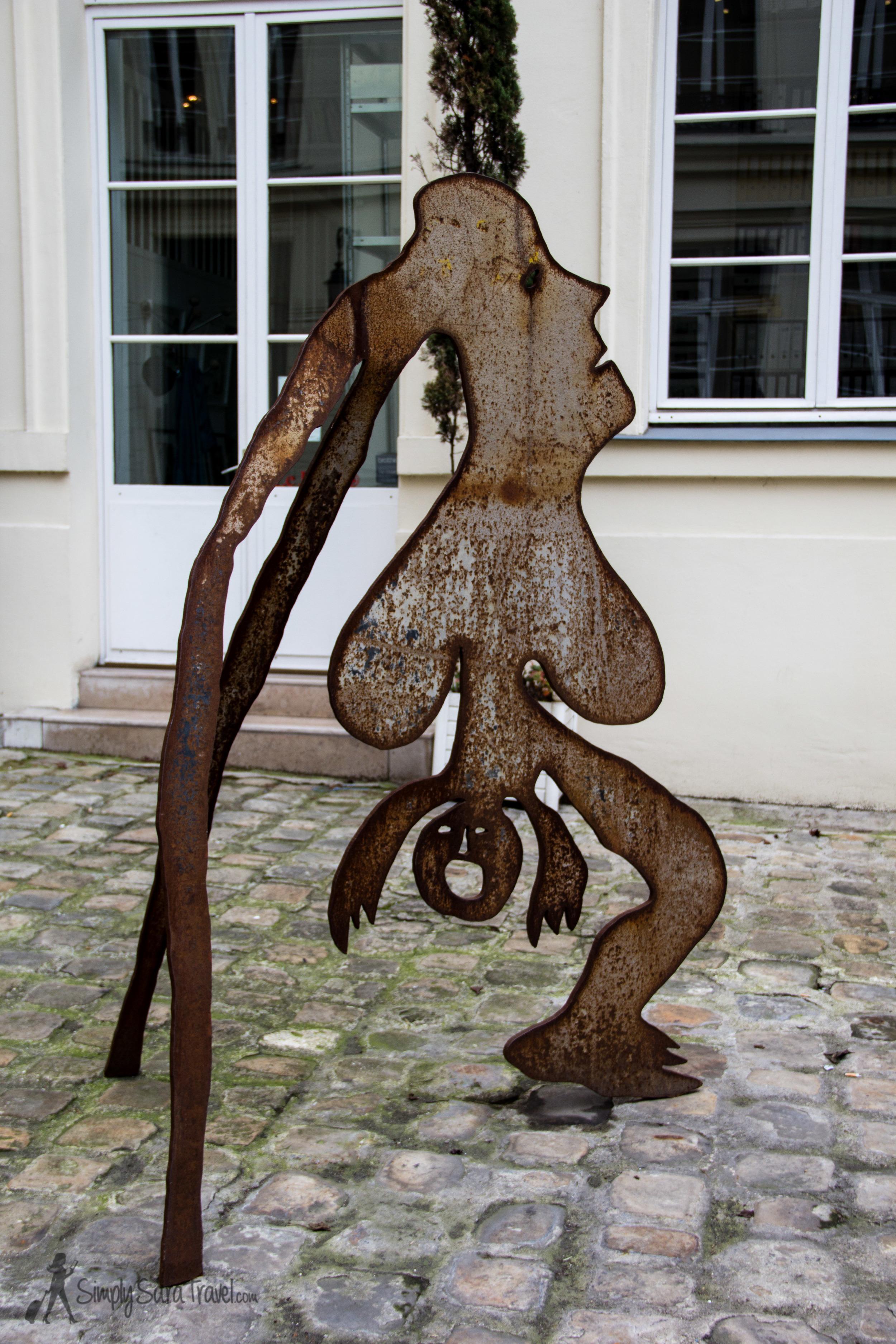One thing I love about Paris is that for as much time you can spend exploring and learning about the city, there is always more. There is so much history, so many details, and centuries worth of characters who have colored this city into the beauty it is today. That’s why even though I had lived in the Marais for almost three years, when Discover Walks offered me a tour of my neighborhood, I jumped. Certainly there had to be more to learn about that a guide could give a new perspective on.
Our tour met right by the steps of Eglise Saint Merri, where we found our first piece of street art on the tour (art and self-expression was certainly a theme, as we ended the morning in front of the Picasso Museum).
Classic example of new meets old in the Marais - an old church and Salvador Dalí side by side
Nowadays, the Marais is quite a trendy area. It’s covered with cute boutiques, delicious restaurants, trendy cocktail bars, and the blossoming craft coffee and cafe scene. But our tour started off by reminding us that it wasn’t always this way. Factories were in the northeast of the city, and the wind blew from west to east. The rich lived in western areas of Paris, while those with less money settled in the east. However, in more recent decades, the city of Paris planted the Centre Pompidou and the Picasso museums in the area. This was done in order to revitalize the Marais by attracting people, and thus draw galleries, boutiques, and other establishments to the neighborhood. The tour started in front of the Centre Pompidou, and we made our way slowly during the hour and a half over to the Picasso museum (where the tour ended with skip-the-line tickets to the newly reopened museum).
I’ve looked at the controversial looking Centre Pompidou countless times, admiring its quirky appearance. (It created quite a stir when it was built - if you have noticed, it sticks out a bit from the rest of the city’s look.) I’ve passed by numerous times, but I never knew what the colors symbolized. We learned that the red tubes, which you can see here (it’s where the escalators are) are red to reference their role as the blood of the building - the people are the life flow. You'll have to go on the tour to find out what the rest of the colors mean though!
Above: More examples of the mix of old and new in the Marais. I love how you can catch glimpses of the Centre Pompidou (which is a modern art museum) and then see one of the historic mansions like this on the right.
Below: I’ve always passed by these buildings and dismissed them as being tilted because they are really old. I was half right - they are quite old - but the slant is intentional. They were built that way so that if there ever were a fire, the fire would spread slower. (Thankfully Paris never saw a great fire like the one that raged through London.)
As much as I learn about the Marais, its past still intrigues me. Yes, eastern Paris was poorer than its western counterparts. Factories had a presence here - just find the Uniqlo store in the Marais and walk in to see the preserved chimney of the factory that was once functioning here, plus the display downstairs that shows some of the machinery that used to be in operation. Yet there was also a very wealthy class of people living in the area at a point too. We walked past a few of these grand buildings that were private residences at one point, and later often turned into museums of some sort.
Here we are at the National Archives. Just take a look at this courtyard (the building is behind me in this photo) - this was once a private residence.
Typical Parisian rooftops as seen from the National Archives
When I had gone out with a broker looking to find my apartment upon moving to Paris, she encouraged me to always feel free to walk into courtyards if the doors of a building were open. Our guide gave the same advice - and apparently I needed to hear it again, because he introduced me to this lovely gallery hidden back in a courtyard that I had never seen, despite living about five minutes away.
We looped back to the street my apartment was on, which I shared with the Picasso Museum at the end of the block, and looked up at this piece of street art by Space Invader. I had noticed it before, but never put together that it was a portrait of Picasso!
When you see the Picasso street art, then you know you are close to the museum that houses his work in Paris...
Before the tour ended, our last stop was outside of the Hôtel Salé, which now houses the Picasso Museum. It’s confusing to an English speaker to see a private mansion like this called a hotel, but our guide explained how the meaning shifted over time. The word hôtel indicated a place to host people, as wealthy people would do in their grand estates. After the French Revolution, many of these wealthy families lost their income streams because they had worked for the government, so they began renting out their properties to replace that lost income. This new development shapes how we know hotels as today.
The name of the Hôtel Salé, this hôtel particular, got its name because the owner’s job was to levy taxes on salt. (Salé means “salty” in French.) As you might imagine, he was not a popular character, but at least we can all benefit from his lovely home nowadays.
The back of the Hôtel Salé in the Marais
Interested to go on a tour? This Discover Walks tour is only offered right now through Viator, and the price includes the 1.5 hour walking tour plus a skip-the-line ticket into the Picasso Museum. I think walking tours are a great way to connect with locals and learn more about regions of a city. (You can see how much I discovered about my own neighborhood in a morning!) If you’re looking for just a tour, and not museum tickets, check out the Discover Walks website. They offer lots of free tours that are tip-based and no reservations are required ahead of time.
[Discover Walks invited me on this particular tour, but my opinion and feedback is my own, as always!]




